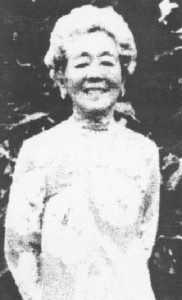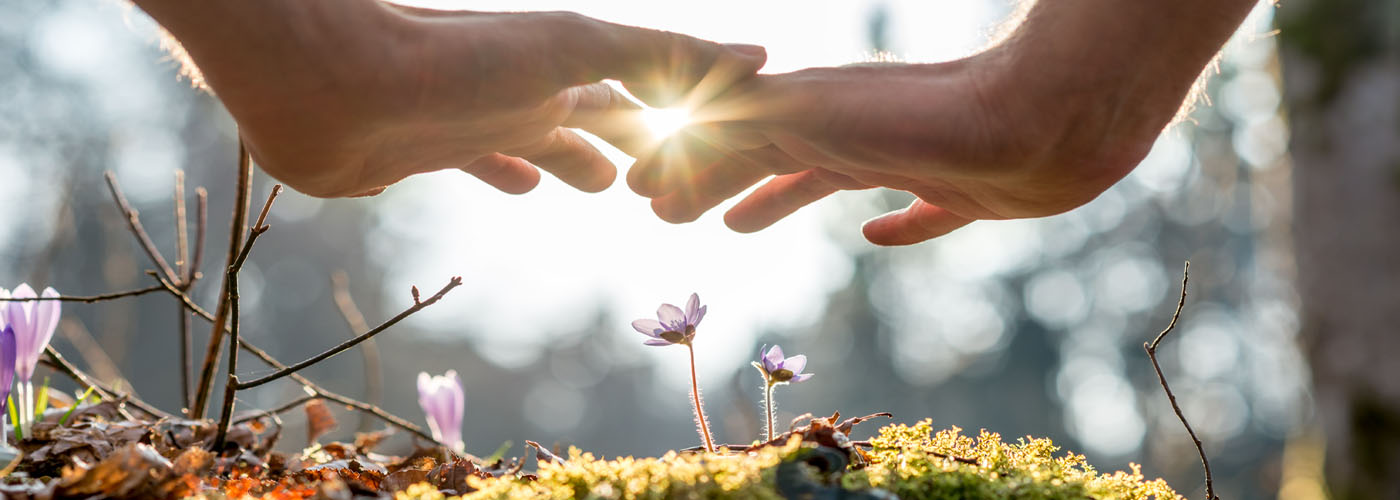As a student of Reiki, the first thing you learn is the history of Reiki. To understand Reiki, it’s helpful to understand a bit about where it came from. Most instructors will tell you that Reiki was discovered by a monk 150 years ago. That is true for the Reiki we know today, however, the concepts of energy work and healing through energy have been around for much, much longer.
The true origins of energy based healing modalities remain unknown. However, evidence of methods and concepts used in Reiki, such as the “laying of hands” for healing can be seen as far back as Ancient Egypt.
Today there are many different energy healing modalities and processes. Each is called by a different name, yet they all seem fairly similar in concept. Each system has a unique vibrational frequency and attributes that work well in conjunction with one another for they all originated from the same source.
Reiki, as it is used today, is a healing technique based on the principle that the Reiki practitioner can channel energy into the patient or client. This is often done through light touch. This “laying of hands” then activates the patient’s natural healing processes through relaxation, restoring both physical and emotional well-being.
It may sound pretty crazy, but everything is made of energy. Once accept that everything is energy, is it really that strange to believe that we can pass energy from one being to another to promote healing or an energy boost?
The word Reiki is composed of two words: rei, which means “God’s wisdom or the higher power,” and ki, which means “life force energy.” The Chinese have their own word for this energy, called Qi, and it’s called prana in Hindu philosophy. Many other cultures have their own word for the energy that flows through each and every one of us. Strangely, the English language has no such word.
To practice Reiki is to use spiritually guided life force energy.
==> Learn more about How Reiki Works
Discovering Reiki
Reiki, as know it today, was developed or discovered over 150 years ago in 19th century Japan. One of Japan’s primary religions is Buddhism, which was introduced in the sixth century and contains sutras, which are short sayings or teachings that are meant for the Buddhist practitioner to meditate upon. These sutras are said to come directly from the oral teachings of Gautama Buddha.
Around the time of the mid-1800s in Japan, at least four different types of Reiki-style healing methods were in place. Before this time, the exact origins of the practice are unknown, since there was no single practitioner or teacher of the method to write it down. However, it is likely that Reiki, as we know it today, existed much earlier in Japan’s history, and could date back even further.
Dr. Usui – The Founder of Reiki
Born in 1865, Dr. Mikao Usui was a Japanese born Buddhist monk, and he’s generally considered to be the first person to not just practice Reiki but to teach it to students and pass on what he had put together after his experiences with this method.
Dr. Usui combined both body and spirit-based healing practices into one. He studied in Europe, America, and also China. During his travels, while teaching, he was asked by a student how Jesus was able to perform miracles. By the time he returned to Japan, Dr. Usui was still thinking about that question.
He decided to climb Mount Kurama, which is northwest of the city of Kyoto, and he spent twenty days there fasting and meditating. On the morning of the twenty-first day, he experienced an enlightenment by discovering the body and life-force energy of Reiki. He immediately put his discovery to use trying it on both himself and others, with great success.
Spurred on to spread this knowledge as both practitioner and teacher, Dr. Usui moved to Tokyo in 1922 and established an institute, where he taught upwards of 2,000 students. People came from all around to listen to his teachings and heal. He customized his healing for each patient. He also helped during a terrible time in Tokyo’s history, when they had a big earthquake and a huge fire. The number of people he helped or saved during that time is unknown, but his reputation for healing was sealed.
After that, he had to establish an even larger training center in Nakano in 1925. He became somewhat of a national sensation in Japan, being asked to go to different cities and demonstrate his healing methods. While modern Reiki focuses more on body and healing, Dr. Usui believed that it was a process towards actually improving the spirit. He also developed the Reiki cure that included chants, meditation, and focused spirituality.
 Dr. Chujiro Hayashi
Dr. Chujiro Hayashi
Dr. Hayashi, as one of Dr. Usui’s most passionate students, continued practicing this method of Reiki by opening a clinic of his own. His wife took over his clinic after he passed away, and no one took over after that, so Hayashi’s clinic came to an end. However, his students, especially one in particular, carried on his methods and expanded it to the international stage.
Dr. Hayashi’s Reiki style was a bit different from his master, thus establishing the basic formal guidelines that are now taught at the Reiki Institute. That includes the hand positions and more modern science-based practices. He had patients lie on a treatment table instead of sitting in a chair so that multiple practitioners would be able to assist with helping the patient. He also introduced the concept of attunement to clear blockages, which is still in modern Reiki today.
Introduction to the West

Reiki was not known outside of Japan, until one practitioner, who was a student of Dr. Hayashi, brought it to Hawaii. Mrs. Hawayo Takata was Hawaiian, but she was the daughter of Japanese immigrants. Her experience with a healing treatment of Reiki amazed her so much that she became Dr. Hayashi’s student. For two years, he taught her both Reiki I and Reiki II, which are the first two of three levels.
Mrs. Takata opened her own clinic in Hawaii, bringing this ancient healing method to the Western world at last. It became so popular and she had so many students, that it has become a well-known alternative healing practice today. She ended up attaining master level Reiki III herself and trained a total of twenty-two masters.
Her major contribution to Reiki was to simplify it down to just eight hand positions, called the foundation treatment, as well as using a different method of attunement for each level of Reiki. Her system has been so effective that thousands of people have been able to learn it. She also pioneered the English word of Reiki for this practice, having named it as such in 1975.
Reiki Today
From just three major Reiki practitioners, the history of this remarkable healing practice has spread out to the world. The International Center for Reiki Training is located in Southfield, Michigan. There are currently more than 100 hospitals in America offering Reiki.
The practice has gone mainstream, with hundreds of books you can purchase, plenty of courses, dozens of websites, and many more resources to help you learn about the practice. Reiki has expanded to include all fifty states, and its popularity continues to grow with each passing year. It’s an effective healing technique for thousands of patients.
Book an In-Person or Distant Reiki Healing Session with me today and start feeling better!
In-Person: 30 Minutes – $45 | 60 Minutes – $70 | 90 Minutes – $95
Distant: 30 Minutes – $35 | 4-Day Continuous Distant Healing Grid: $75



 Dr. Chujiro Hayashi
Dr. Chujiro Hayashi
Hi,
I never thought these practices existed in reality as a way of ministering healing to people. I’ve only seen it in movies and have registered it in mind that it’s just a practice of Monks. I have learnt something today!
Derrick,
Thank you for coming in with an open mind. A monk was the one who re-discovered the art of energy healing and the techniques have been passed along. Those who experience Reiki have shared a variety of things with me. Some say it feels like my hands are vibrating. Others say my hands are hot while others say they feel ice cold. Many people state that they feel several sets of hands on them during the session and they can’t tell where I’m working unless they open their eyes. Others also report that the energy feels like someone has a hair dryer blowing on them, but there’s no heat and no sound. Just the physical blowing-like sensation is felt. Some see visions, some see colors. The experience is unique to every individual. Maybe someday you’ll give it a try!
It was interesting to read about the history of Reiki, I’m surprised the history isn’t actually that old. I’ve never had a Reiki healing session, but some of my friends have and I’m interested to try it one day. How do your distant Reiki sessions work?
Lotta,
Reiki, as we know it today, isn’t terribly old, but healing with energy goes way back. Distant healing sessions can be scheduled via my website. Prior to the healing session, I contact you and find out what it is you would like me to help with. During the scheduled healing session you may choose to relax or you may simply go about your day as you normally would. Either way, the energy will reach you and have an effect.
Hi
I have always been very interested in natural methods of healing and I found your article very informative and in debt. My question however is would I still receive the same benefits of healing from a distance as I would in person?
Thank You
Evelynn,
Thanks for stopping by. Great question! And the answer is yes! Energy has no boundaries. Distance means nothing. I have helped people on the opposite side of the globe just as much as people right in front of me. The only difference is that people that are in-person often have more of an “experience” when receiving the energy because they too are present and in the moment. But the effects of the energy are just as strong whether I’m with you or thousands of miles away.